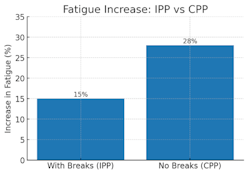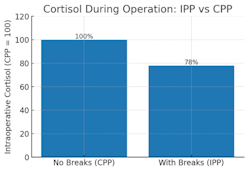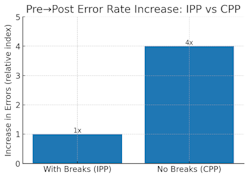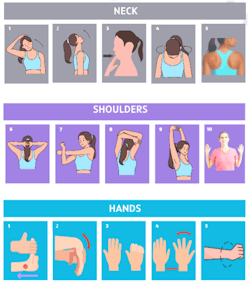Wellness Corner: How microbreaks in dentistry reduce fatigue and prevent burnout
What you'll learn in this article
- How skipping breaks in dentistry increases fatigue, musculoskeletal pain, burnout, and clinical error rates
- Why evidence supports 30–60 second microbreaks for reducing stress hormones, lowering error risk, and improving focus and physical performance
- Practical strategies to integrate active microbreaks—like stretches, posture resets, and breathing exercises—into daily clinical workflows
We aren’t known for being an industry that promotes taking “breaks,” often sending a loud and clear nonverbal statement that break taking kills production. After all, Benjamin Franklin may as well have been describing dentistry when he said, “Time is money.” But what if we’ve got it wrong? What if we’re actually hurting the bottom lines (physical, mental, and economical) by not taking dentistry microbreaks?
According to Stanford University, a rest break can be quick—30-60 seconds to stretch, hydrate, breathe, snack, or briefly walk away from one’s workspace.1 None of these are difficult to do, unless you find yourself short-staffed or gloved up in a long procedure of highly repetitive and static tasks (basically everything dental).
Why it matters: we cannot serve our patients, meet financial goals to stay in business, or preserve our bodies for today (or the long run) if we are in pain, calling out sick, going off on leave, or switching careers from dental burnout or disability. Too many offices report being short-staffed, so something has to give ... before we break.
Evidence-based benefits of microbreaks for dental professionals
What the studies show is that taking breaks reduces fatigue, errors, injury, burnout, and increases production through heightened focus and energy.2
One study went as far as testing workers who did and did not take breaks (figures 1–3). It showed that
- Breaks decreased fatigue levels by 46%.
- Breaks decreased cortisol levels by 22%.
- No breaks increased error rates by four times.
Another study showed an 88% performance increase with lack of decrease in task focus, along with a 100% increase in physical performance when integrating breaks.3 Systematic reviews repeatedly show microbreaks during long procedures reduce upper limb pain—especially effective when paired with ergonomic tools.
Active vs. passive breaks: All breaks aren’t created equally
The quality of the break counts. While taking a passive pause, like a snack break with coworkers, can have team cohesive benefits, maximizing that time with an active stretch, breathing exercises, or an internal pep talk is more reparative.
Also, reconsider a trip to the breakroom if it’s more of a commiseration station than a place of rest or recouperation. Gossip and negativity serve to drain the body of important energy more so than recharge it.
Studies show that “stretching, strengthening, torso stabilization, and ergonomic interventions were more beneficial than passive microbreaks, reducing pain and the feeling of fatigue and increasing employees’ mood.”4
Simple chairside microbreak exercises for dental teams
Being chairside doesn’t mean we are without the opportunity to move the body. Between tasks and/or role changes (moving from operator to assistant while the doctor moves into the operator position) provides an opportunity to do one or more of the following microbreak exercises (figure 4):
- Neck rolls
- Chin over shoulder mobility drill
- Scapular squeezes (toward the spine)
- Forearm and wrist circles
- Gentle torso twists or seated spinal rotations
- Light wrist extensions and flexions
- Short posture resets with deep breaths
Practical ways to integrate microbreaks into dental workflows
Much like oral hygiene recommendations, integrating self-care is often best achieved when starting small—with just one or two small changes consistently performed as part of a routine, then added to once the habit is formed.
Consider where in the natural flow of an appointment or during the day is good for using 30–60 seconds and set that item as a cue for a microbreak. A successful aid for establishing a routine is with a reminder (smartwatch or computer alarm pop-up) to remind us (through vibration, a sound, or notification).5
Always start where you are. Trying to do all the things at once or at an unrealistic level can lead to frustration and eventual abandonment of the goal.
Opportunities for microbreaks:
- Setting neutral posture with a deep breath before inserting instruments into the mouth
- Stretching between administrative and instrumental tasks
- Shoulder or neck rolls while taking a panoramic x-ray
- Chest/shoulder stretches against a cupboard while the doctor does the exam
- Morning huddle—teams that stretch together stay together
Microbreaks don’t just save teams from burnout and body pain; they increase the bottom line by preventing the errors and lack of advocacy that affect a successful practice. So, how will you incorporate microbreaks into your daily practice?
Next steps
- Incorporate one or two short stretches between patient procedures.
- Set a smartwatch or computer reminder for 30–60 second breaks.
- Encourage team-wide microbreaks during morning huddles.
- Replace passive pauses with active stretches and breathing resets.
Editor’s note: This article first appeared in Clinical Insights newsletter, a publication of the Endeavor Business Media Dental Group. Read more articles and subscribe.
References
- Stanford University. Environmental Health and Safety. Accessed August 14, 2025. https://ehs.stanford.edu/subtopic/microbreaks
- Engelmann C, Schneider M, Kirschbaum C, et al.Effects of intraoperative breaks on mental and somatic operator fatigue: a randomized clinical trial. Surg Endosc. 2011;25(4):1245-1250. doi:10.1007/s00464-010-1350-1
- Hallbeck MS, Lowndes BR, Bingener J, et al. The impact of intraoperative microbreaks with exercises on surgeons: a multi-center cohort study. Appl Ergon. 2017;60:334-341. doi:10.1016/j.apergo.2016.12.006
- Vitoulas S, Konstantis V, Drizi I, Vrouva S, Koumantakis GA, Sakellari V. The effect of physiotherapy interventions in the workplace through active micro-break activities for employees with standing and sedentary work. Healthcare (Basel). 2022;10(10):2073. doi:10.3390/healthcare10102073
- Yen H-Y, Huang H-Y. Comparisons of physical activity and sedentary behavior between owners and non-owners of commercial wearable devices. Perspect Public Health. 2021;141(2):89-96. doi:10.1177/1757913921989389
About the Author

Katrina Klein, RDH, CEAS, CPT
Katrina Klein, RDH, CEAS, CPT, is a 15-year registered dental hygienist, national speaker, author, competitive bodybuilder, certified personal trainer, certified ergonomic assessment specialist, and biomechanics nerd. She’s the founder of ErgoFitLife, where she teaches that ergonomics and fitness are a lifestyle to prevent, reduce, and even eliminate workplace pain.




